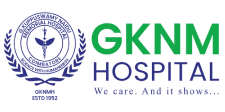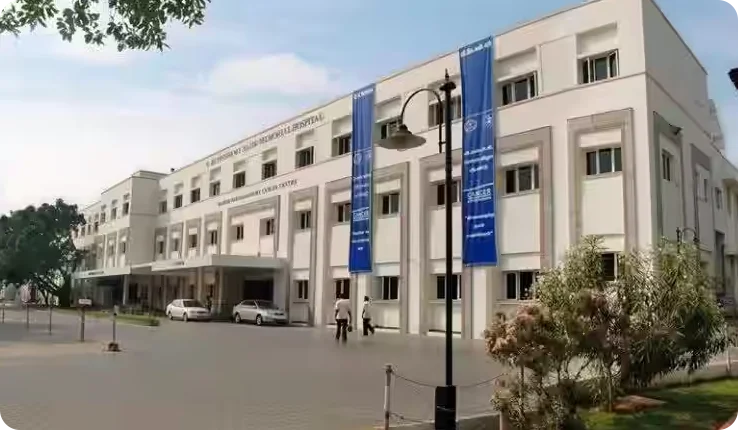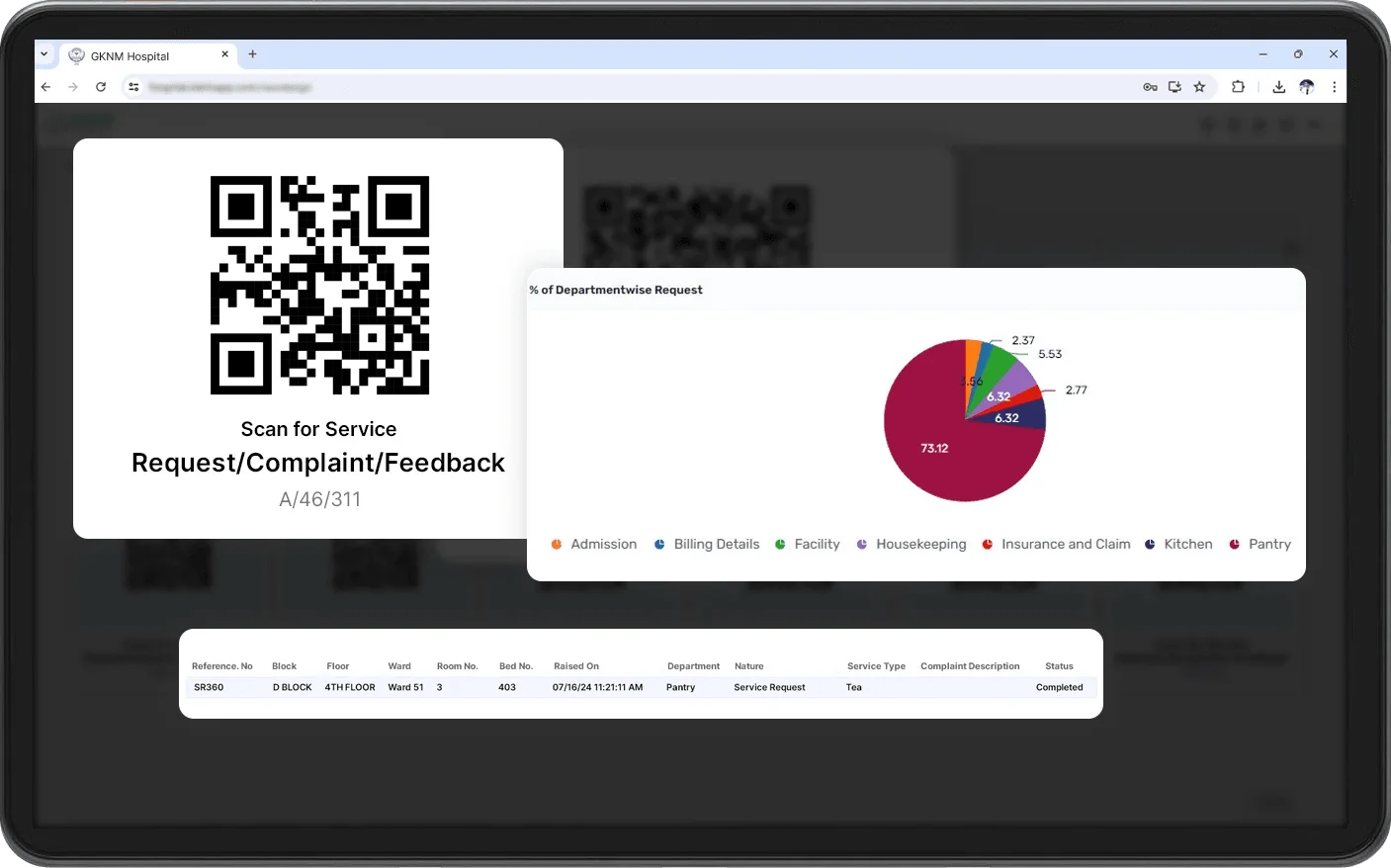
GKNM Hospital Enhances Service Request Management with sterlo, Driving Efficiency and Reducing Costs
For over 70 years, G. Kuppuswamy Naidu Memorial (GKNM) Hospital has been a trusted healthcare provider in Tamil Nadu, offering quality care across 50+ specialties with over 200 doctors. Founded in 1952 as a women and children's facility, GKNM has grown into a major hospital serving five districts with a 600-bed capacity. As it expanded, managing patient service requests and feedback became a challenge. To address this, GKNM collaborated with sterlo, a low-code no-code transforms healthcare, to streamline service management, improve patient satisfaction, and enhance operational efficiency.

The Challenge
Given the hospital's extensive infrastructure and large patient volume, manually managing service requests was becoming increasingly difficult. The hospital’s management was particularly concerned about the overwhelming burden on civilian staff and medical assistants, who struggled to manage the sheer volume of tasks. A major issue was the lack of an automated system for handling service requests, complaints, and feedback that would remain user-friendly for patients of varying technological proficiency. GKNM Hospital needed a solution that could streamline the process, making it easy for both patients and their families to submit requests, while enabling hospital staff to respond quickly and efficiently. GKNM required a scalable solution to accommodate both patient needs and internal operations. Additionally, they needed a system that patients and their families could easily access without the need for extensive setup or software installation. Off-the-shelf SaaS solutions were not practical for GKNM, as they often required patients to install mobile applications, which was not feasible for many users.
Primary difficulties
- Manual management of service requests became increasingly difficult.
- The high volume of tasks overwhelmed the staff.
- Lack of an automated, user-friendly system for managing service requests, complaints, and feedback.
- They needed a scalable solution to meet both patient and operational needs.
- Many patients could not easily install or use mobile applications required by off-the-shelf SaaS solutions.
How sterlo Transformed GKNM Hospital’s Operations
GKNM Hospital on boarded sterlo for their custom-built solution that eliminated the need for patients to download an app. Instead, patients or their families could easily access the service request portal by scanning a QR code located in the hospital’s wards and public areas. Once scanned in, they could raise service requests, file complaints, and provide feedback, all through a simple and intuitive interface. One of the key features of the sterlo platform was its on premise deployment, multi-lingual support, complex workflow, push notifications, and instant communication support, which were essential for GKNM Hospital. These features were critical in ensuring higher adoption rates and patient satisfaction in Enterprise Low-Code Application Platforms. GKNM build an automated escalation matrix, which streamlined the handling of service requests across departments. This matrix ensured that each service request, whether it involved patient care, food services, or housekeeping, It was automatically routed to the appropriate department. If a request, It was not addressed within a specified turn-around time (TAT), a hierarchy in charge, such as a supervisor or department head, automatically notified through escalation matrix. This action helped ensure that the team addressed requests promptly and effectively.

Key Benefits of sterlo No-Code and Low-Code Solution for Healthcare:
1. Enhanced Operational Efficiency
GKNM Hospital used sterlo to automate various workflows, which helped significantly reduce the manual effort involved in managing service requests. By automating the process, the hospital's staff were able to focus more on patient care, while the platform handled the logistics of routing and escalating requests. This led to increased productivity across the hospital and ensured that patients received timely responses to their requests, illustrating how Low-Code No-Code is the future of development.
2. Improved Patient Satisfaction
The hospital management used sterol platform, which promptly addressed patient’s service request complaints and feedback. This streamlined approach resulted in improved patient satisfaction and higher feedback scores.
3. Timely Completion of Services
GKNM Hospital used sterlo automated escalation matrix, which played a crucial role in ensuring service requests were completed on time. If the system did not fulfil a request within the designated time period, the system would send a push notification to supervisors and administrative heads. This not only ensured timely action but also held staff accountable for their tasks.
4. Comprehensive Monitoring and Reporting
GKNM Hospital's management utilized the sterlo platform, which provided a unified dashboard offering a holistic view of the hospital's operations. Through this dashboard, key personnel such as the Director, CEO, and department heads were able to track service requests, complaints, assess patient feedback in real-time, and monitor staff productivity. This enabled hospital leadership to make informed decisions and identify opportunities for improvement. Additionally, sterlo platform generated detailed reports automatically. These reports, which could be tailored for weekly or monthly reviews, were sent to key stakeholders, including workers, supervisors, and management, ensuring that everyone had access to the information they needed to maintain high standards of care and efficiency.
Conclusion
GKNM Hospital’s adoption of sterlo has streamlined operations, improved patient satisfaction, and enhanced efficiency. By automating service requests, escalations, and reporting, the hospital saved time, reduced costs, and maintained high-quality care. As GKNM grows, sterlo scalable solution will remain essential to its continued success.